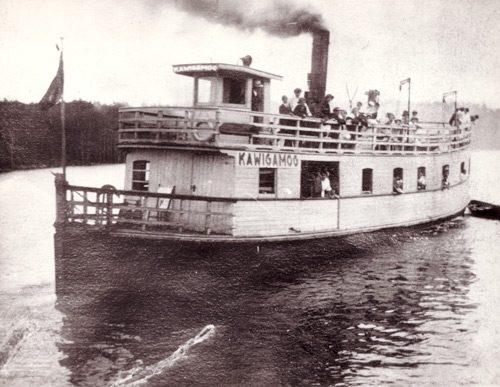 Our communities were originally homesteaded and established by people from the British Isles and Europe following the Free Land Grant of 1868. At the same time, the vast white pine stands were being cut for ship building. Although no clearings or homes, churches, schools, or roads greeted our settlers, they worked together and their hard work and foresight created our communities. Homes were built, the land was cleared and crops were planted, schools and churches were built in each settlement and eventually, a road was built to connect them. This is now called Highway 522, connecting Highways 11 and 69.
Our communities were originally homesteaded and established by people from the British Isles and Europe following the Free Land Grant of 1868. At the same time, the vast white pine stands were being cut for ship building. Although no clearings or homes, churches, schools, or roads greeted our settlers, they worked together and their hard work and foresight created our communities. Homes were built, the land was cleared and crops were planted, schools and churches were built in each settlement and eventually, a road was built to connect them. This is now called Highway 522, connecting Highways 11 and 69.
The settlers found that the land was not rich enough to provide them with any more than a meager existence and so while the women cared for their families and animals on their small parcels of land and tended to their chores, most of the men would work in the large bush camps in the winter, cutting the pine logs. In spring these logs would be floated down the river to be loaded onto ships or cut into lumber in the mills that were also established. Today we have a population approximately 2000 among the villages, many of who are retired persons. Many of our residents are descendants of the original settlers to our area and have inherited their determination and foresight. Two public schools serve the needs of elementary students.
Tourism has become a very important component of the local economy. With its numerous lakes and hundreds of acres of unsettled land, fishing and hunting have always been a popular attraction. As well, our area is becoming, more & more popular, as a cottage getaway.
For further information, please feel free to visit our local museums.

